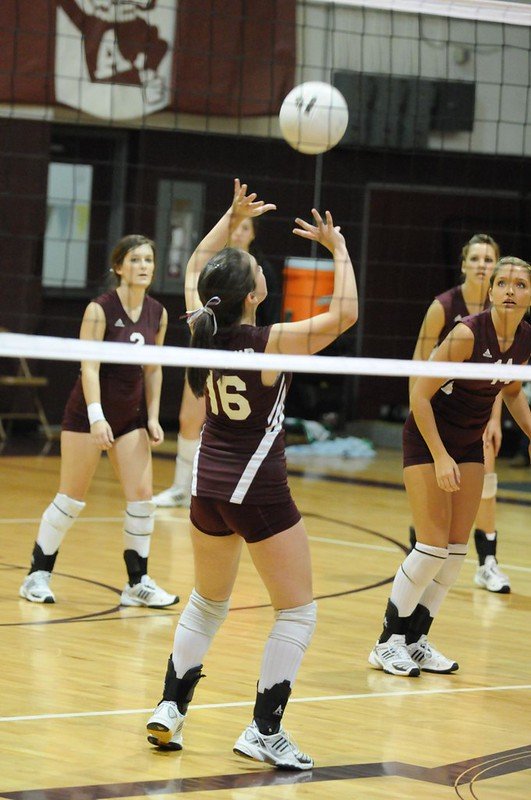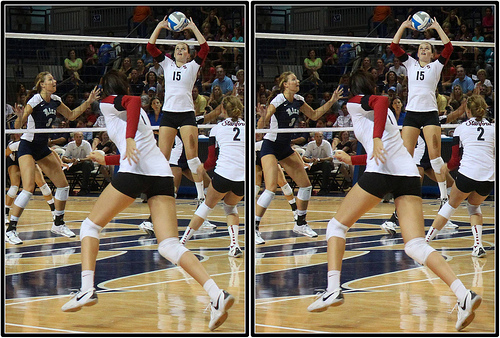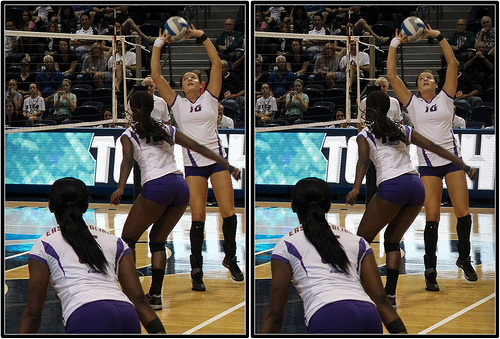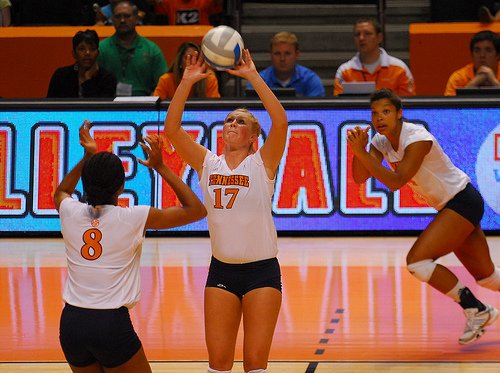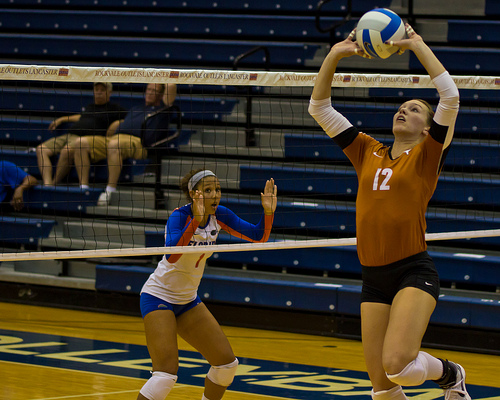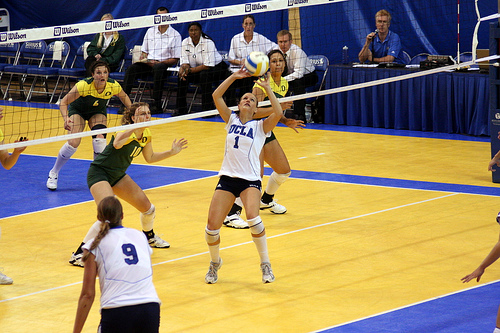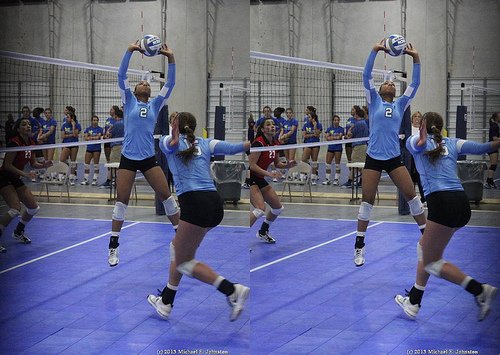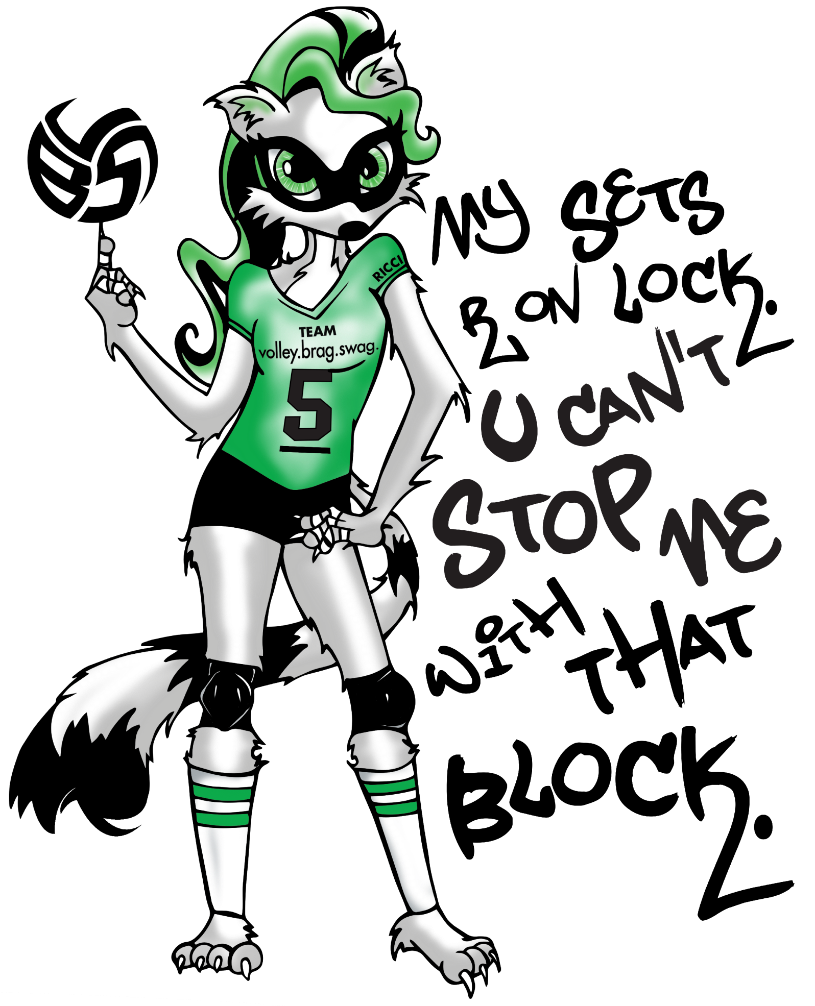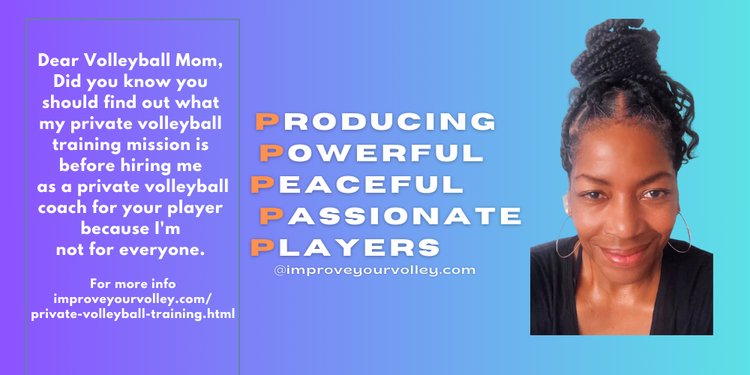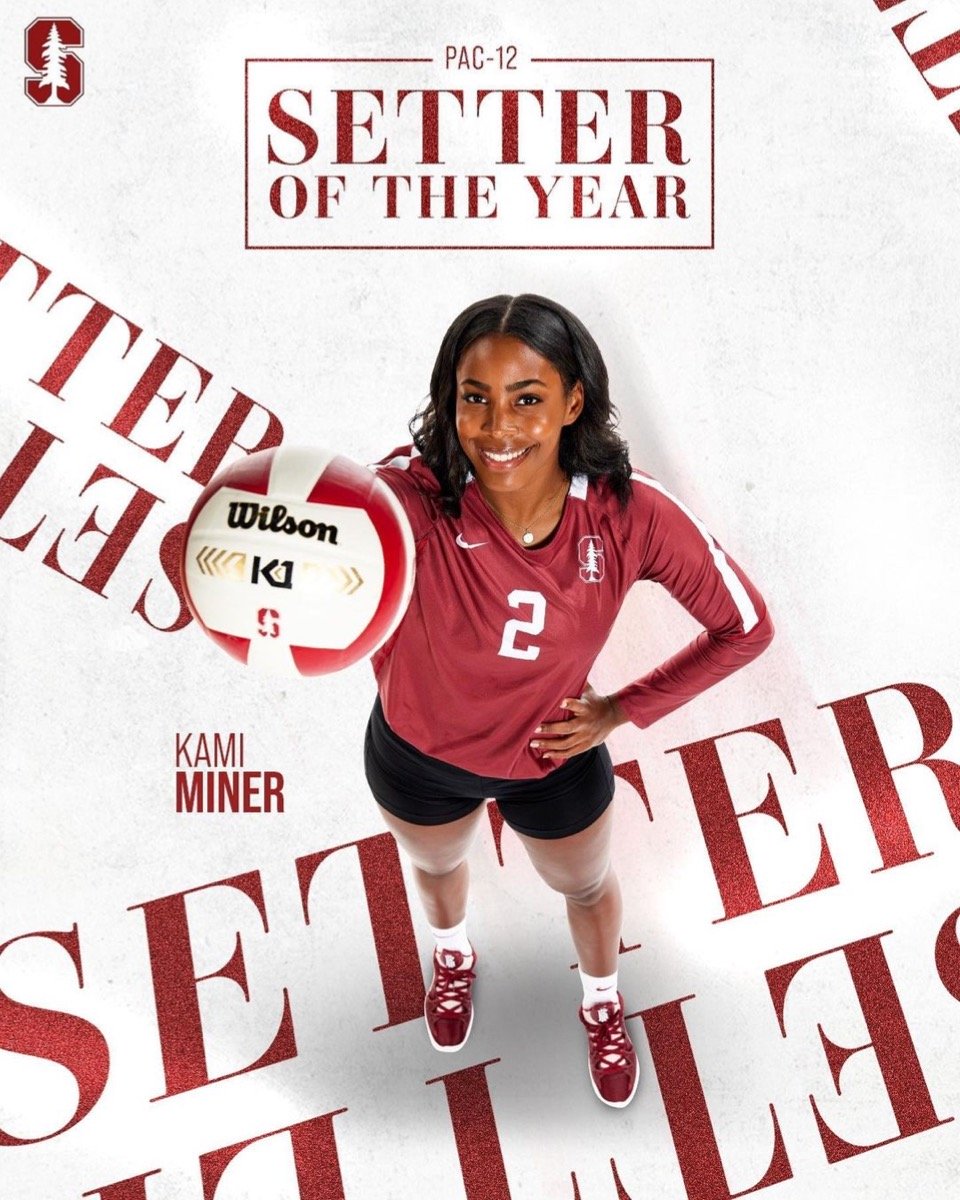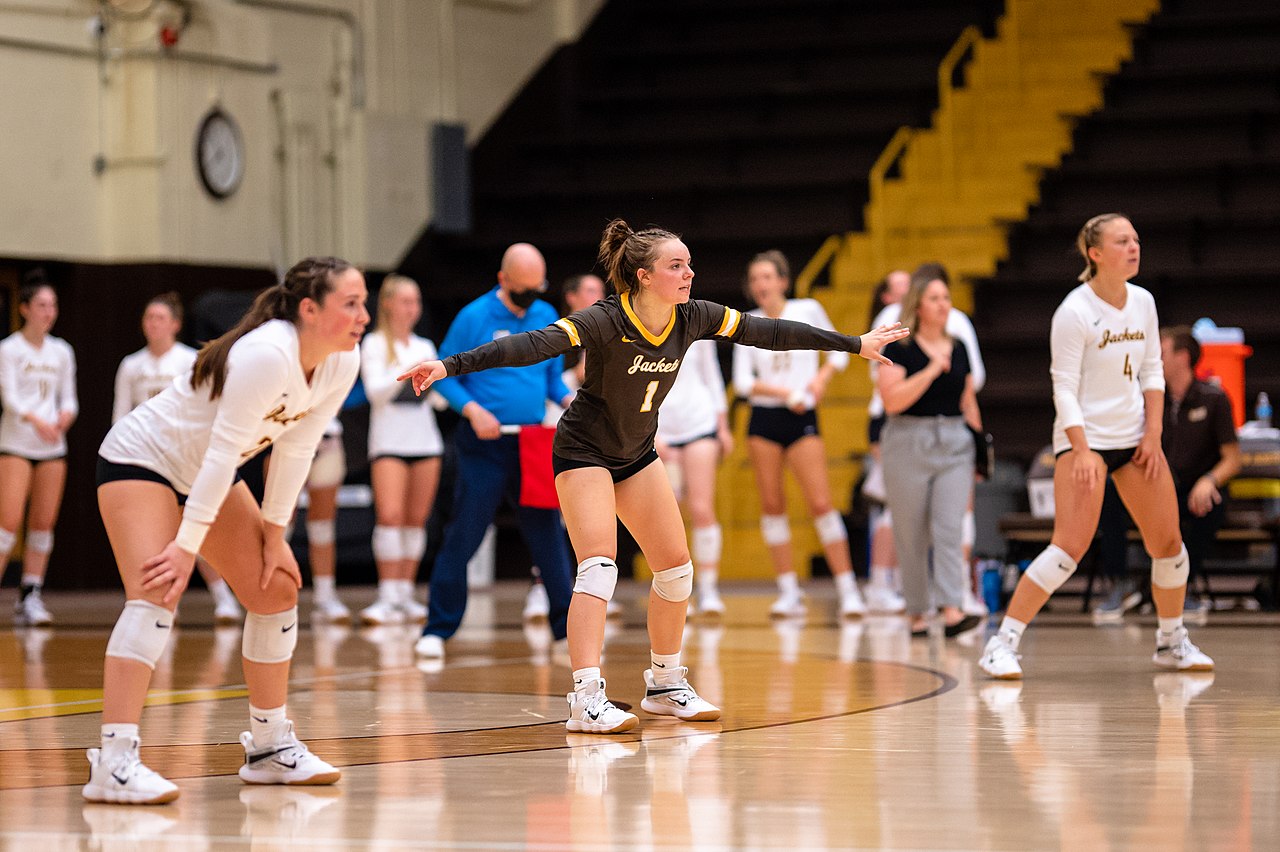- Improve Your Volleyball with Coach April
- High School Varsity Volleyball
- Volleyball Setter Training
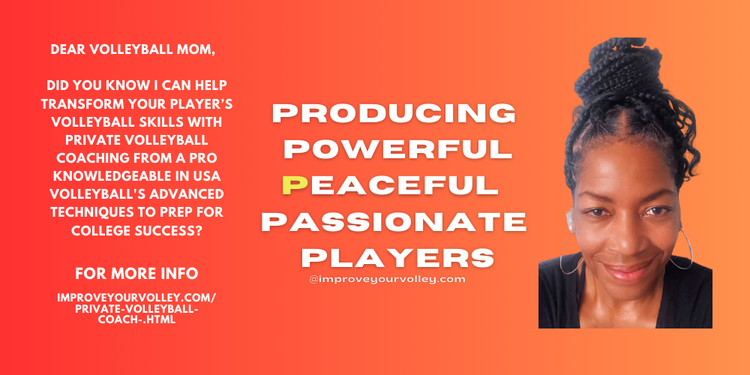 Dear Volleyball Mom,
Do You Know What Sets My Private Volleyball Training Apart From Anyone In Vegas?
I invite You to read what my private volleyball training mission says before considering hiring me as a private volleyball coach because I'm not available for everyone.
Dear Volleyball Mom,
Do You Know What Sets My Private Volleyball Training Apart From Anyone In Vegas?
I invite You to read what my private volleyball training mission says before considering hiring me as a private volleyball coach because I'm not available for everyone.Volleyball Setter Training: Techniques to Improve Your Setting Skills
This volleyball setter training reviews step-by-step each body part and what it does so you learn how to correct your mistakes and improve your setting skills.
The setter, often considered the quarterback of a volleyball team, plays a crucial role in orchestrating the team's offensive strategy.
Watch Izzy set Piper on the right side during private training with me. Piper working on transitioning off the net fast and then accelerating the last two steps of her spike approach which propels her into the air while swinging high and fast to spike the ball.
With their strategic decision-making, precise hand placement on each ball they touch, and ability to read the game, setters have a major impact on the flow, tempo, and pace (speed) of the game.
Understanding the importance of the setter position and honing setter skills are essential for any volleyball team aspiring to achieve success on the court.
Volleyball Setter Training Drills: The Setter Runs The Offense With The Quick Set and Five Outside Set
Today’s tips and volleyball setter training reviews the technique necessary for those players who are looking to become better volleyball setters.
Regardless of age, some volleyball players find this skill easy to learn while others find the setting technique harder to master.
For this reason, I decided to describe what each body part or body section needs to do when performing the skill correctly.
I hope that by using this method you will end up with a checklist of setter training tips that you can always refer to so that learning how to set a volleyball becomes a more enjoyable experience.
What I want for you to be able to do is to check yourself for specific things so that even if you are practicing at home or training alone without the help or assistance of a coach or a teammate you can learn how to correct your own setting technique which should help you to reduce your own unforced errors!
Volleyball Setter Training
1. What Your Feet Ought To Do
For each and every skill that you need to perform in this sport, your feet are the most important body part that you need to use.
No matter where you are on the court, you have to use your feet to get to the ball first, right?
The need to use your feet when learning how to set a volleyball is no exception. You will find that what your feet do will determine how well you perform the setting skill.
To begin learning how to set the ball, you should position your feet so that they are shoulder width apart.
Not too wide and not too close, but comfortably apart with knees bent slightly.
For right handers - in this position slide your right foot a couple of inches forward so that it's slightly in front of your left foot.
For left handers slide your left foot a few inches backward. This gives you a better balanced position when you start setting a ball on the run.
To review:
1. Starting Position in Serve Receive
To begin, stand with your feet shoulder-width apart in a standing starter sprint stance.
Ensure that your weight is evenly distributed on both feet, maintaining balance and stability.
2. Approaching the net
When you land in your spot, which is usually 4-5 feet to the right of the middle of the net, close to Zone 2, you turn so you're facing Zone 4, positioned so that your right shoulder is close to the net. You should be perpendicular to the net.
3. Foot Placement
As you approach the ball, position your feet at a comfortable distance apart, maintaining shoulder-width positioning.
Avoid extreme widths (too wide or too close), as it can compromise your balance and agility.
Bend your knees slightly to maintain a stable base and generate power.
4. Directional Adjustments
To set the ball accurately to your intended target, make small adjustments with your feet.
For right-handed setters, slide your right foot a couple of inches forward, positioning it slightly in front of your left foot.
For left-handed setters, slide your left foot a few inches backward.
This balanced positioning ensures stability and enables you to execute effective sets on the run.
5. Quick Movement:
Emphasize speed and agility in your footwork.
React quickly and decisively to reach the ball and position yourself under it for optimal contact.
Maintain lightness and nimbleness in your footwork to adjust to the varying demands of the game.
Remember, practice is crucial to master footwork as a setter.
Focus on taking large explosive steps that cover distance, precision in directional adjustments, and the ability to adapt quickly to the ball's movement.
Volleyball Setter Training
2. How Your Midsection Is Positioned
Now, let's move up to the positioning of your body's midsection.
Whether you are setting a ball from a stationary position (standing still) or when you have to move to get under the ball, for your midsection--you want to imagine that you have an iron rod or stick that has been inserted in your back.
When contacting the ball get your feet to the ball quickly so you are directly underneath it before you contact it... your straight arms distance above your head ....while keeping your back straight with no bending at the waist and hips.
This stick starts from the top of your neck and ends just at your tail bone.
This iron rod will prevent you from bending over at the waist, in an effort to lean forward to touch the ball, which means that you can only reach straight up above your ahead to contact the ball keeping your body completely perpendicular to the net.
Chest, waist and hips should be "squared up" which means "facing" the left front zone.
Of course your hands are above your head but your midsection should be positioned so its facing left front.
Here are more specific details on correct midsection positioning for setters, broken down into easy-to-follow instructions:
To review:
1. Starting Position:
Stand with your feet shoulder-width apart in a stable and balanced stance.
Ensure that your body is upright, with your back straight and your core engaged.
2. Midsection Alignment:
Imagine an iron rod inserted into your back, starting from the top of your neck and ending at your tailbone.
This imaginary rod keeps your back straight and prevents bending at the waist and hips.
3. Squaring Up
Ensure that your chest, waist, and hips are aligned and facing toward the left front zone, also known as "squared up" positioning.
4. Perpendicular to the Net
When contacting the ball, position your midsection perpendicular to the net.
Avoid any twisting or excessive leaning forward, as this can affect the accuracy and consistency of your sets.
Maintaining a perpendicular posture ensures a solid platform for delivering precise and well-directed sets.
5. Body Control
Focus on body control and stability throughout the setting motion.
Avoid unnecessary movements or swaying that can compromise your balance and impact the accuracy of your sets.
Keep your core tight and engaged to provide a solid foundation for efficient and controlled setting.
With time and experience, you will enhance your setting skills and become a more reliable and impactful setter for your team.
Volleyball Setter Training
3. How To Use Your Arms
Your arms should start at your sides slightly bent at your elbows in a 90 degree angle, just like you have them when you run.
When the ball is approximately two to three feet above your head you should start to bring both arms up in front of you, and as your arms come up, bring them closer together.
When your hands are just above chest level, they should start to come together so that your index fingers are barely touching and they form the shape of a loose triangle with the thumbs of both hands.
To review:
1. Starting Position
Begin with your arms by your sides, slightly bent at the elbows, creating a 90-degree angle just like when you run.
Keep your shoulders relaxed and avoid tension in your upper body.
2. Approach
As the ball approaches, bring both arms up in front of you.
Start to raise your arms when the ball is approximately two to three feet above your head.
3. Arm Movement
4. Wrist and Hand Positioning
Keep your wrists firm but relaxed to maintain control and accuracy.
For high sets, position your palms open to the ceiling, ensuring a larger surface area to contact the ball.
For hut sets or "Go" sets to the outside, your palms should be open and slightly angled towards Zone 4, where the ball will be delivered.
5. Contact Point
Make contact with the ball at a point above the top of your forehead.
Ensure that your arms are fully extended, allowing for optimal control and precise setting motion.
Focus on a clean hand-to-ball contact, aiming for accuracy and consistency in your sets.
Remember to practice these techniques consistently, paying attention to your arm positioning, movement, and hand contact.
Focus on developing control and accuracy in your sets by maintaining relaxed but firm positioning throughout the entire motion.
With practice, you will improve your ability to deliver precise and well-placed sets to your teammates, setting them up for successful attacks.
Volleyball Setter Training
4. Volleyball Setting Hands
The correct volleyball setter hand position when they are contacting the ball is for the palms of both of hands to face where the ball is going to be delivered.
If you set a high ball the palms are open to the ceiling but if you set a hut or a "Go" set to the outside then your palms should be open and facing Zone 4.
Also when setting the middle and/or back setting the palms of your hands should be facing the ceiling.
For the front set to the middle blocker your shoulders are right in front of your ears and when back setting your shoulders would be slightly behind your ears.
The forefingers and thumbs on each hand should barely touch each other and they should form the shape of the ball or a broken or loose triangle which is contacted above the top of your forehead.
To review:
1. Starting Position
Begin with your arms slightly bent at the elbows, creating a 90-degree angle.
Keep your hands relaxed and open, ready to receive the ball.
2. Hand Placement
Position your palms to face where the ball is going to be delivered.
For high sets, open your palms to face the ceiling, ensuring a larger surface area to contact the ball.
For sets to the outside, angle your palms slightly towards Zone 4, where the ball will be directed while keeping your elbows high
3. Finger and Thumb Configuration
Keep your forefingers and thumbs on each hand barely touching each other.
Form a shape that resembles the ball, creating a loose triangle with your thumbs and forefingers.
This hand positioning provides stability and control during the setting motion.
4. Distance from the Forehead
When contacting the ball, ensure that your hands make contact above the top of your forehead.
This height allows you to achieve optimal control and precise direction in your sets.
5. Distance Between Hands
Maintain a comfortable distance between your hands, allowing for a clean and accurate setting motion.
Avoid keeping your hands too close together, as it can limit your control and accuracy.
6. Consistent Hand Contact
Focus on a clean and consistent hand-to-ball contact throughout the setting motion.
Strive for a soft and controlled touch on the ball, keeping fingers wide so each finger contacts the ball to ensure accuracy and consistency in your sets.
Practice, and doing tons of setting reps are critical to perfecting hand positioning and gaining control and accuracy in your sets.
Focus on developing muscle memory and honing your technique through repetition.
By maintaining a relaxed but firm hand position and emphasizing a wide-fingered clean contact, you will improve your ability to deliver accurate sets that set up your teammates for successful attacks.
Do You Follow Me on Pinterest?
Follow me on Pinterest Volleybragswag to improve your game even faster!
I share alot of individual, partner and easy-to-do volleyball serving drills we do in class with my followers.
Many of these volleyball practice drills you can do at home by yourself or try at your next practice with your teammates.
If you're a B team or JV player trying to make varsity next year...your goal should be to complete 1000 reps a day of at least three of the basic skills on your own...volleyball passing, serving and setting should be at the top of the list.
Varsity Volleyball Training
Where Should You Go From Here?
Good times! Where do you need to go now? Here are three options:
- Learn more about the Volleyball Setter Position by exploring the Related Links below.
- Follow the suggested reading on our Sitemap page Learning How To Play (Sitemap)
- Or visit the pages in the Volleyball Positions section in the drop down menu at the top of the page.
- Reintroduce yourself to Miss Ricci the Raccoon, #5 , the setter and team captain for the All Beast VolleyBragSwag All Star Team.
SUSCRIBE
To My Email Newsletter Below!
From Lady Vol to Legend: Coach April Produces Powerful Passionate Players...is that you?
What Are You Looking For?

Hi there!
Thanks for stopping by. Hope you learned something today that will help you reach your volleyball goals.
Be sure to subscribe to my email newsletter so you can learn more each week!
Stay strong! Stay motivated!
-Coach April

SUSCRIBE
to my email newsletter below!
Vegas Volleyball's Unsung Heroes: Celebrating Moms with Peace Love Volleyball Shirts
Ready to energize your volleyball mom journey?
Subscribe to my 'Producing Powerful Passionate Peaceful Players' email list above on ImproveYourVolley.com.
You'll receive energy-boosting tips, exclusive insights from me, Coach April Chapple on maintaining momentum in volleyball.
Let's power up the Vegas volleyball scene together!
Recent Articles
-
Frequently Asked Libero Volleyball Position Questions Answered
Apr 14, 25 08:10 PM
I answer the most frequently asked libero volleyball position questions many players and coaches ask that will help you learn about the player responsibilities. -
Coach April's Peace Love Volleyball Phrases For T-Shirts Honor Moms
Apr 13, 25 03:49 PM
Whether on the court or in everyday life, April Chapple's volleyball phrases for t-shirts are serving inspiration for players and moms, one message at a time. -
What Is A Setter In Volleyball? My Setting Guide With Answers To FAQs
Apr 13, 25 12:36 AM
Learn what a volleyball setter is from a champion coach. Get expert insights, training tips, and proven strategies for volleyball's most strategic position.
